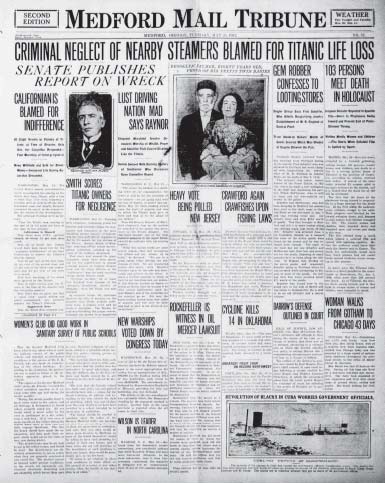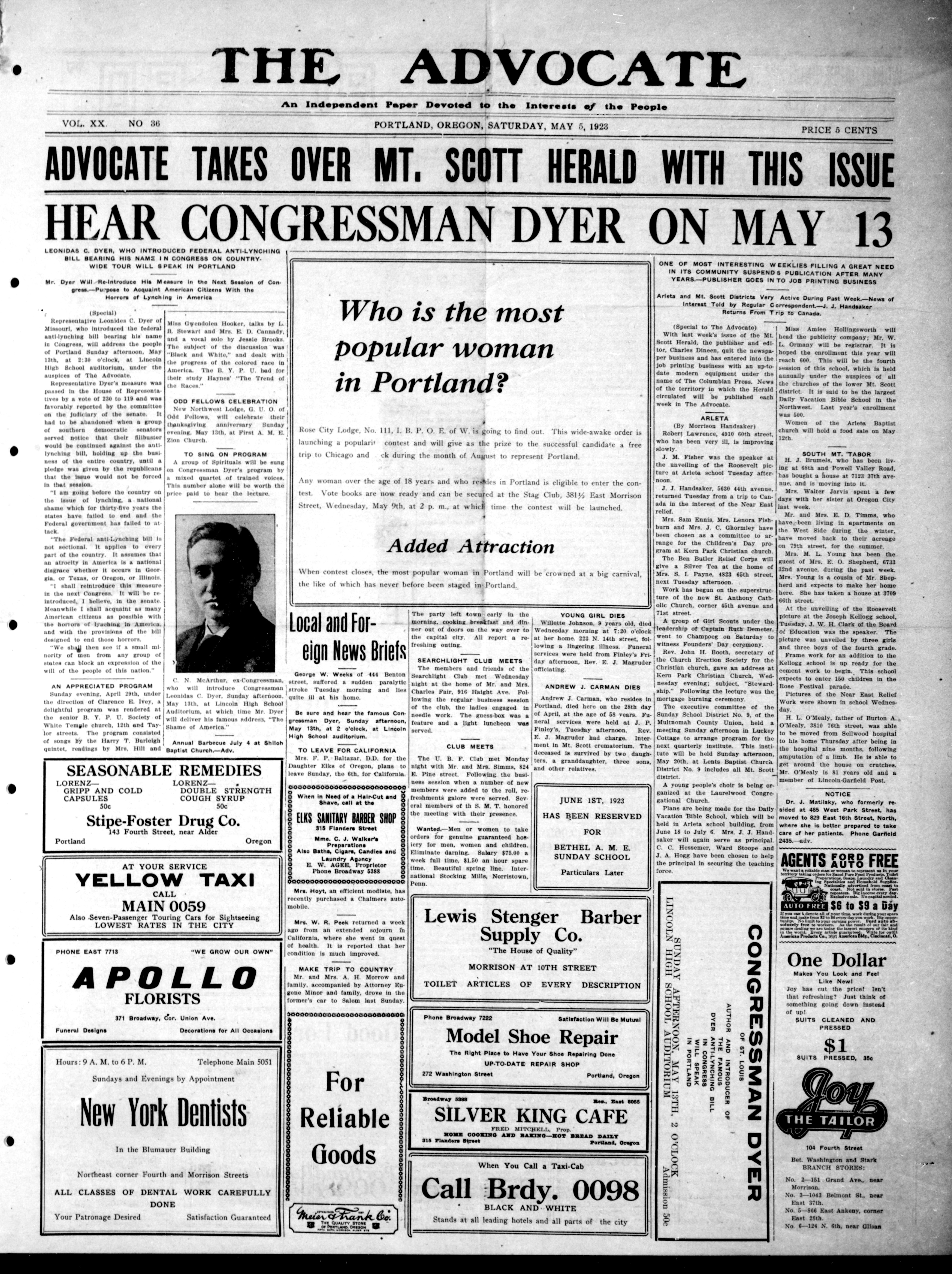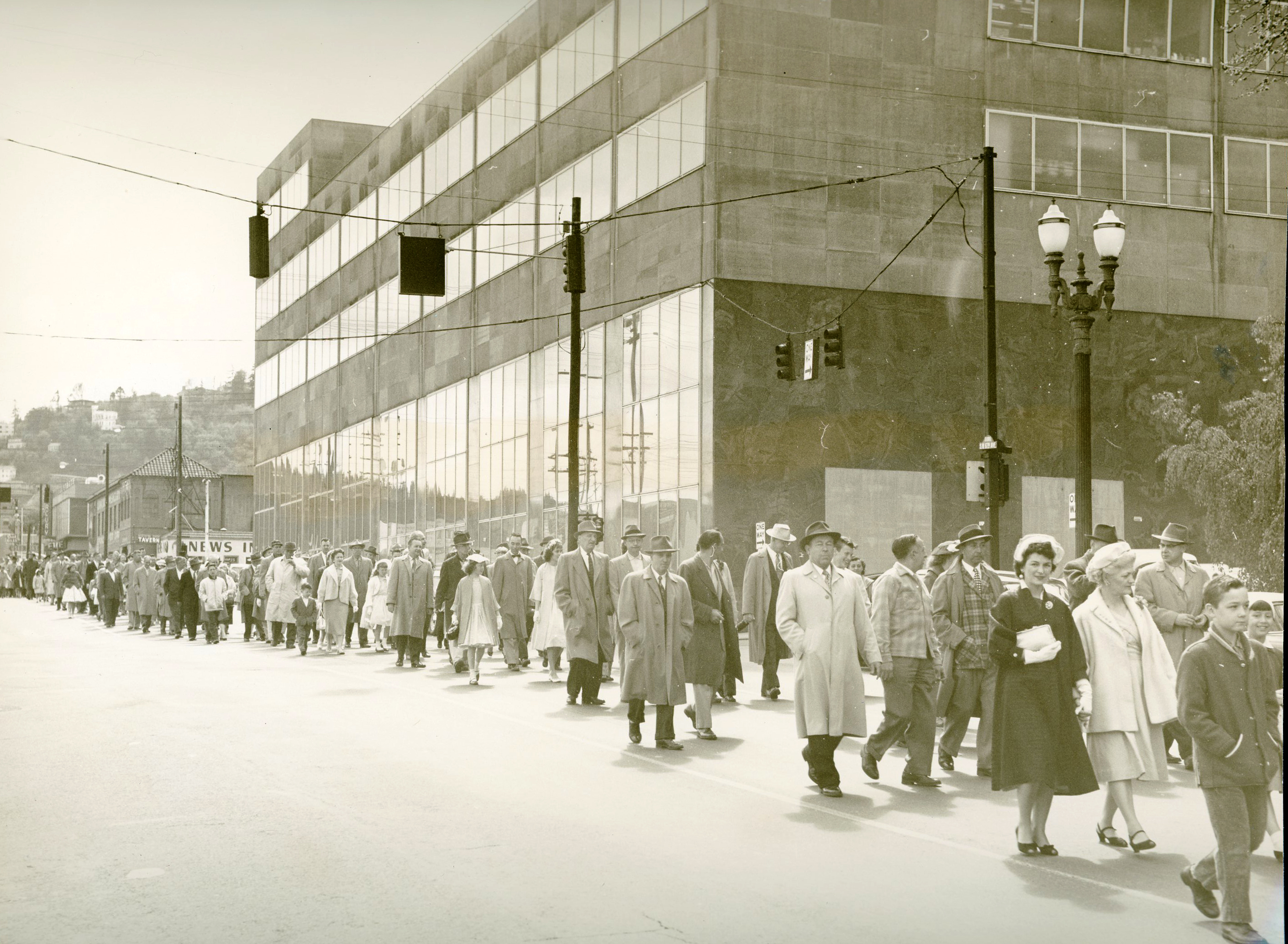Charles S. “Sam” Jackson, born in Virginia on September 15, 1860, came to Oregon in 1880 and settled in Pendleton. Barely twenty and without any formal training, Jackson sought an opportunity to pursue his interest in printing and publishing. After working as a printer for the East Oregonian, he bought the weekly newspaper in 1882 and became its publisher. By 1888, the paper had become a powerful voice in the region, and Jackson was publishing the paper six days a week.
In 1902, Jackson’s success in eastern Oregon attracted the attention of supporters of a new afternoon paper in Portland, the Evening Journal, which had been started in March of that year but was failing by July. Jackson moved to Portland, bought the paper with the help of other investors, and changed its name to the Oregon Journal. The Journal quickly became a credible competitor to the Oregonian, which was originally founded as a Whig newspaper in 1850 but went Republican by the 1860 presidential election.
Under Jackson’s direction, the Journal generally supported a Democratic agenda and called for improvements that would make Portland a strong community, solidify its standing as a port city, and improve its political structure. Jackson endorsed the “Oregon System,” William U’Ren’s 1902 reform movement that created the initiative, the referendum, and the recall. Nevertheless, when thirty-two measures appeared on the 1910 ballot, he warned his readers that “the way to make direct legislation enduring is to employ it with discretion.”
The Journal moved its offices in 1912 to a newly constructed building at the corner of Southwest Broadway and Yamhill, now known as Jackson Tower. That year, Jackson led a study of Portland’s mayor/council system of municipal government, which resulted in an initiative in May 1913 that proposed a radical change in how the city was run. The initiative called for a nonpartisan election of a mayor and four fulltime commissioners; each would be responsible for one of the main departments of city government, and each would have one vote in commission proceedings. The measure passed, and the configuration remained in place until 2024, when voters approved the 2025 transition to a district-based council, independent mayor, and city administrator.
Recognized for his philanthropy, Jackson’s most heralded contribution was his 1917 gift of eighty-eight acres of land on Marquam Hill for the University of Oregon Medical School. The land is now the main campus of the Oregon Health and Sciences University.
Jackson died on December 27, 1924, and his son Phillip took over as editor and publisher of the Oregon Journal. The paper was sold to the S.I. Newhouse Company in 1961. In 1982, with the decline in readership and advertising revenue that was affecting so many afternoon newspapers across the country, Sam Jackson’s newspaper ceased publication.
-
![Charles S. Jackson.]()
Jackson, Charles S., bb007148.
Charles S. Jackson. Oreg. Hist. Soc. Research Libr., bb007148
-
![]()
Oregon Journal, July 24, 1902.
Courtesy Historic Newspapers of Oregon
-
![]()
East Oregonian, March 1, 1888.
Courtesy Historic Newspapers of Oregon
Related Entries
-
![Medford Mail Tribune]()
Medford Mail Tribune
For over a hundred years, the Medford Mail Tribune argued against what …
-
![Oregon Statesman]()
Oregon Statesman
Throughout its history, the Oregon Statesman has been a chronicler of O…
-
![The Advocate]()
The Advocate
From 1903 until about 1938, the Advocate recorded incidents of racism a…
-
![The Oregonian]()
The Oregonian
The Oregonian, the oldest newspaper in continuous production west of Sa…
-
![The Portland Reporter]()
The Portland Reporter
A product of the third longest newspaper strike in the United States, t…
Related Historical Records
Map This on the Oregon History WayFinder
The Oregon History Wayfinder is an interactive map that identifies significant places, people, and events in Oregon history.
Further Reading
MacColl, E. Kimbark. Merchants, Money & Power: The Portland Establishment, 1843-1913. Portland, Ore.: The Georgian Press, 1988.
Turnbull, George. History of Oregon Newspapers. Portland, Ore.: Binford and Mort, 1939.








